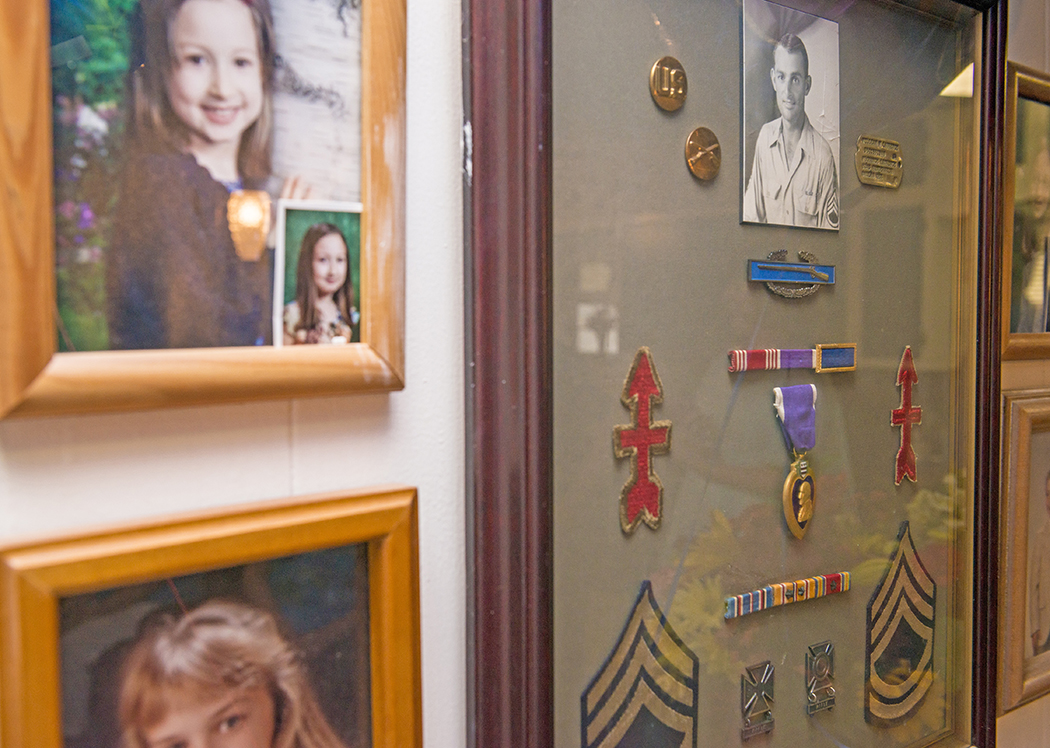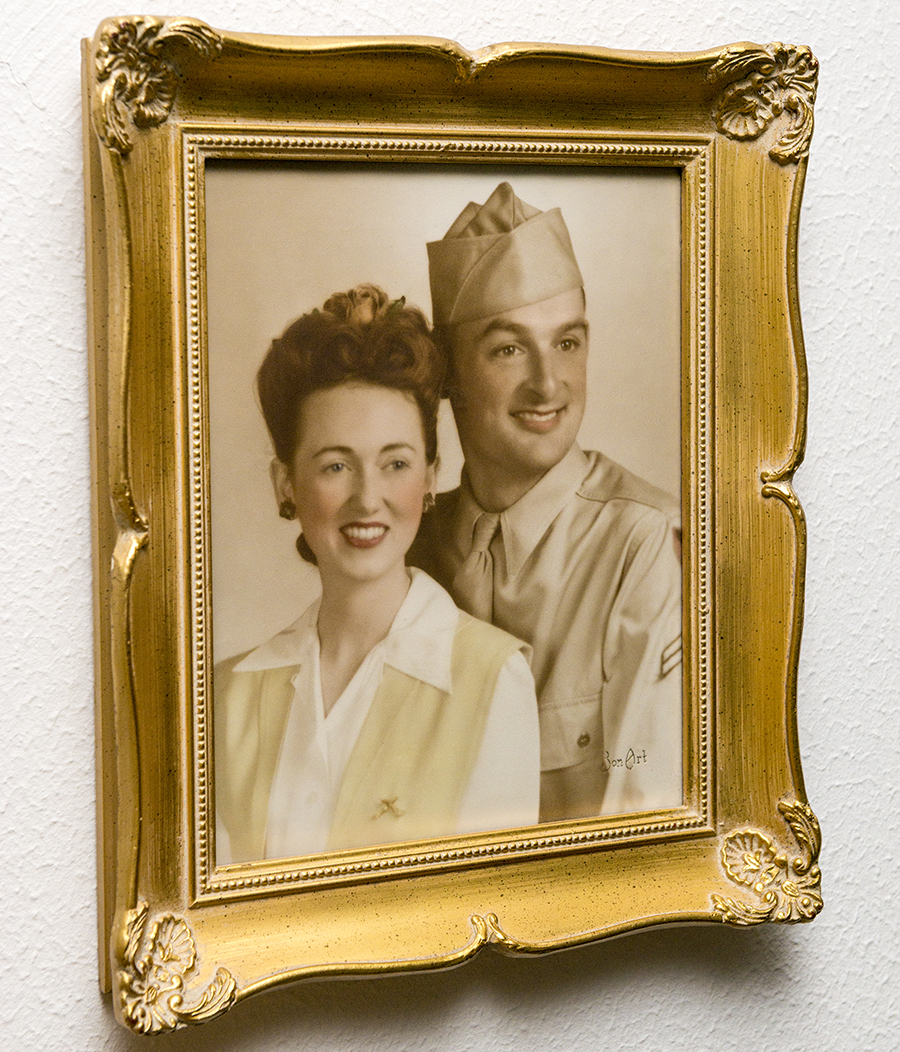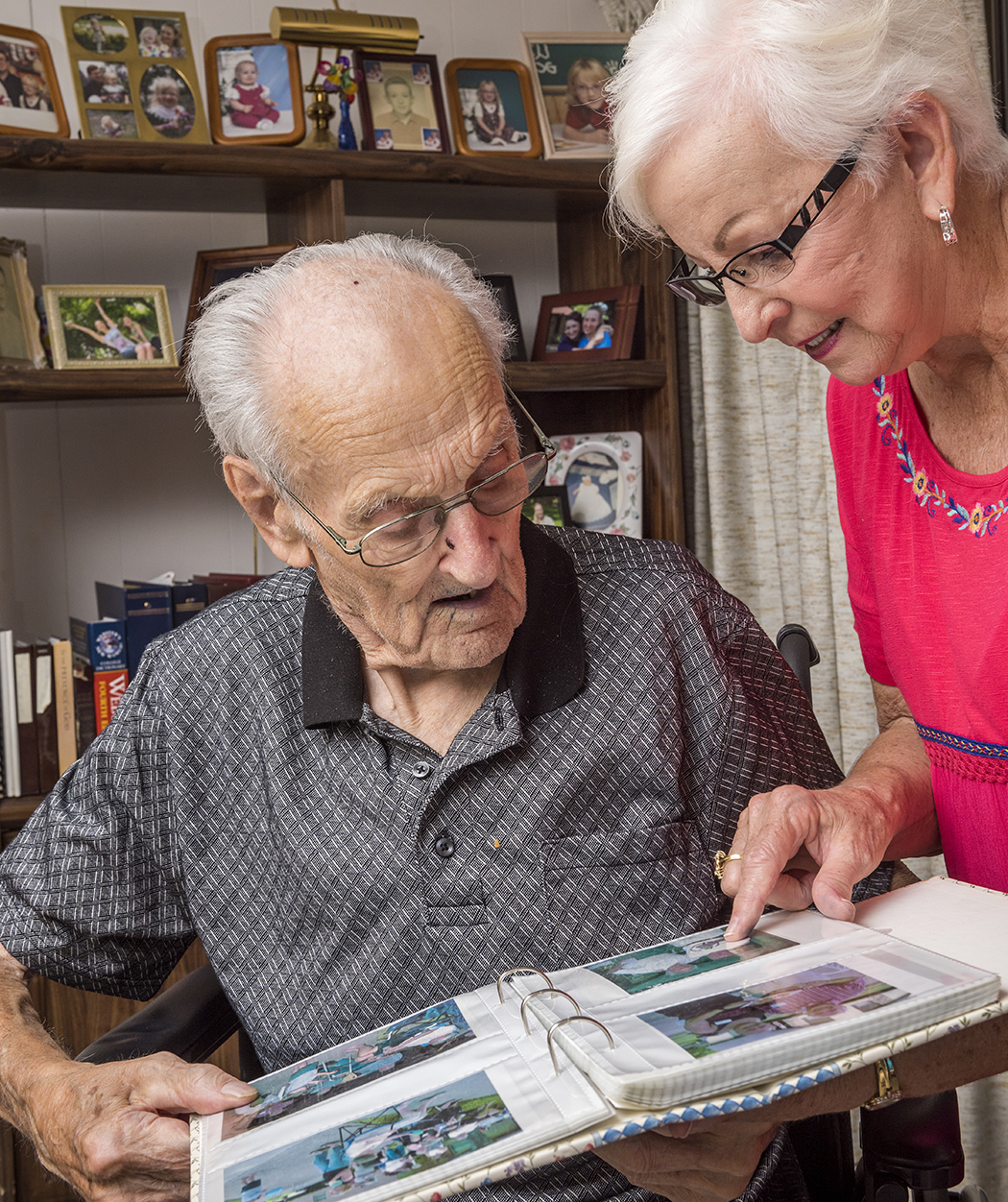
William Wayne Laurence wrote his obituary 30 years ago. His neighbors and family joined him in September to celebrate 100 years. (Photo by Danny Fulgencio)
Age of enlightenment
In 1943, William Wayne Laurence, son of a Texas farmer, was in his early 20s and freshly married to Florence Earlynn, a girl with kind, chestnut eyes and a halo of amber curls. He’d been working at an insurance company about a year when his number came up, and he was gone with the WWII draft. Across the Pacific, 8,000 miles from home, he charged into battle on Filipino sand.
“Let’s put it this way: War was no picnic,” says Laurence, prone to understatement.
Florence and Wayne would raise three sons, welcome 11 grandchildren and nine great grandchildren during their 75-year marriage. A long career in the grocery store business, serving as a deacon in the Baptist church — that is the gist of his life, he might say; those are the details he included in his obituary, anyway.
He and Florence each prepared one 30 years ago, he says.
She died just over a year ago. The night before his 100th birthday, he rewrote his death announcement, editing it down from three pages to one.
He doesn’t watch war movies or talk about what happened in the Philippines, he says.
He does bear two reminders. One is a bullet permanently lodged in his chest (another hit his shoulder, and a third, his eye). He doesn’t remember the day in vivid detail, a small mercy.
“You wouldn’t want to, would you,” he says.
He recalls standing sentry with another young man before three bullets tore into him; he was blind “for a little bit,” he says. His fellow soldier draped Laurence over a shoulder and carried him across a dune to a first aid station. Laurence never learned the identity of the man who saved his life.

A portrait of Wayne and Florence Laurence hangs above the hard-won Purple Heart and other military awards. (Photo by Danny Fulgencio)
Another reminder is his Purple Heart medallion, which hangs, beneath a portrait of Laurence wearing his Army uniform.
Florence received the commendation, awarded to servicemen wounded or killed in action, before Laurence had an opportunity to speak or write to her.
She didn’t know how seriously her husband was injured or if he was alive.
He spent about 90 days in a military hospital. “Then they sent me right back to the front line,” he says. “I was there until the war was over, on the Villa Verde trail.”
The U.S. military’s drive up the trail was a major factor in weakening Japanese troops, according to a History.com article, which describes Villa Verde as ruthless terrain with “nearly perpendicular slopes, bald razorback ridges and jungle valleys …” Japanese fire and blast attacks rained from northern ridges along the trail.
“You have some fear,” Laurence says of his return to combat and the conditions. “But scared? No.”
He says it took him a while to “get over it … I think I am over it now,” he says. “I realize the Japanese, they were following orders. They are human beings.” He pauses. “That’s the first I’ve spoken about this in 20 years. This is the most I have ever talked about it.”
In “Saving Private Ryan,” Capt. Miller (Tom Hanks) wonders if his wife will even recognize him if he makes it home, and “how he will ever be able to tell her about days like today.” Laurence made it home, kept his experiences mostly to himself, and the way he tells it, went on to lead a contented life full of love, long friendships and faith. Ordained a deacon in ’46, he remains a member of Lakeside Baptist. His morning routine includes listening to sermons and reading Bible passages.
That’s why 85-year-old neighbor Dan Glover never visits before 10 a.m. Glover, who with his wife, Barbara, has lived 50 some years across the street, drops in every day, especially since Laurence has been on his own. He’s not taking care of the centenarian, mind you. Laurence can fend for himself, although he did have to stop mowing his lawn and driving (which really bugs him) a few years ago, after a hip replacement landed him in a wheelchair. It doesn’t stop him from gardening.
Glover chides, “He is hardheaded.”
Laurence agrees with a hearty nod.
It’s safer to say that the residents of Mapleridge Drive take care of each other, notes Amber Penny, who, at 51, is “spring chicken” on the block. “There is Dolores Leask, two doors down from me, who celebrated her 88th birthday in May,” Penny says. “The Glovers, next door, look after us all.”
Saturday afternoon following Laurence’s 100th birthday, the aforementioned folks, plus friends, family and former neighbors (including the Glovers’ son Bobby who drove in from Shreveport) gathered at the home Laurence has occupied since the early ‘60s, a tidy ranch house adorned with family photos, a pristinely preserved vintage floral sofa, an old organ. One guest delivered a photo album — many of the faces look familiar, if younger. The scenes are of Mapleridge block parties and gatherings; a few include Wayne and Florence Laurence together, wearing matching smiles.
After a round of “Happy Birthday,” Laurence blows out three candles (1, 0, 0), and everyone’s lips and teeth turn blue from frosting.
The guest of honor and his cake-covered, cheerful face is an obvious photo op, but as a shutterbug approaches, Laurence warns, “Don’t you do it,” and wipes his mouth; the stubborn azure stain fades.
Like a century of memories, color lingers, as does the shine in Laurence’s eyes when he scans the room, and his grin.







